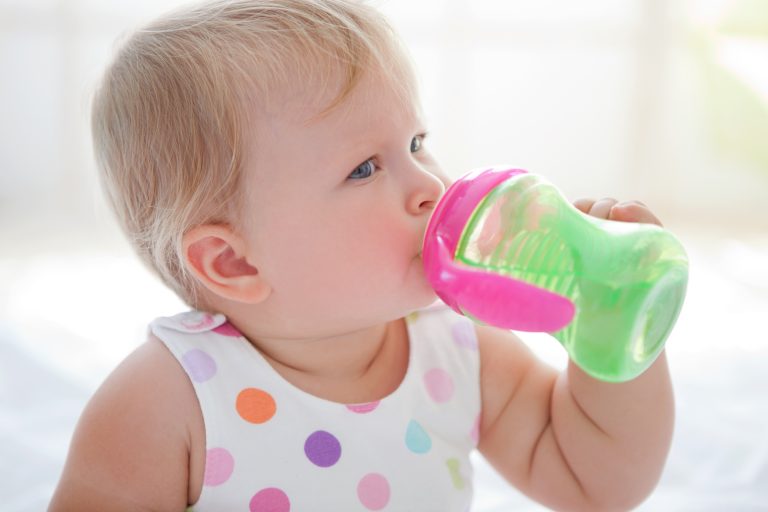When it comes to babies weaning, the only thing you can truly expect is that you won’t know what to expect. A great piece of advice is to go slow and follow their lead. Some babies can jump straight into an open cup, and that’s amazing, maybe even preferable. But, for many, dealing with the constant spills is too much. Other times, babies have difficulty adjusting or having the motor skills to go straight to an open cup. Transitioning from breastfeeding to a sippy cup can be a long process, especially finding one that works well. The trial-and-error process can become frustrating and expensive, so have a game plan and research before buying cups.
A good rule of thumb is if they can sit up in a highchair, they’re probably ready to try a sippy cup. Of course, there may be babies where this rule may not apply, but as the parent, you’ll know (and don’t listen to other people’s noise or opinions, you know your baby best).
Here are three tips that help transition from breastfeeding to a sippy cup:
Start dropping one feed at a time:
Dropping breastfeeding altogether can be tough on both mom and baby. Gradually reducing the number of feeds seems to be a smoother transition from breast to sippy cup.
Let them play with the cup first:
Switching from breast to bottle is a big difference. Allow your little one time to adjust to the new cup. Provide them with the sippy cup before you intend to use it; they’ll get comfortable with it (holding, touching, and playing with it). This gives them a little time to feel comfortable with the bottle itself before you introduce liquid. You can assist and guide them through learning what it is.
If one cup doesn’t work, try again:
Multiple factors can lead to whether a sippy cup will work. And if one doesn’t work, try another. When first starting to shop for a sippy, a few things to consider are the age of your baby and their ability to hold the cup; some cups can be pretty heavy for low-tone babies. Or they can be too wide for small hands. So start with these considerations, and from there, consider flow speed, nipple softness etc.
If a sippy cup doesn’t work for you, consider passing it along to a friend to try with their little one. Although some sippy cups can be recycled, you’ll have to check the grade of plastic and your local recycling guidelines.
What features to look for before buying when you’re transitioning your breastfed baby :
1) Weight – breastfed babies aren’t used to holding a bottle, and some can find them heavy.
2) Width- if your little one has small hands, don’t purchase a wide bottle.
3) Handles- breastfed babies find gripping handles a little easier than holding the cup.
4) Dishwasher safe- because washing all the pieces can be annoying!
5) Spill-proof – Often, the reason parents transition with a sippy cup is that they want to avoid spills, so make sure your cup is spill-proof and leak-proof.
Best Sippy Cups for Transitioning your Breastfed Baby:
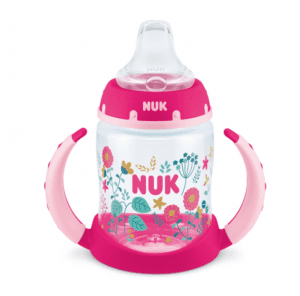
NUK® 5oz Learner Cup | NUK Canada (nuk-canada.ca)
This is our top pick for transitioning to a sippy cup. The two features we found most helpful were the air vent to reduce the air swallowed and slow down the flow. Plus, the handles make it easy for little hands to hold, yet are removable for when they’re more comfortable with it. It’s dishwasher safe.
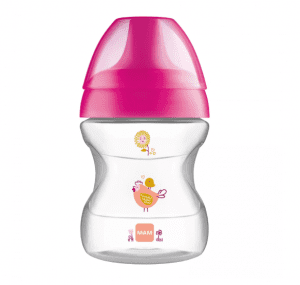
Learn To Drink Cup 6 oz – Drinking Cup (mambaby.com)
Another soft spout for an easy transition. The shape is designed for a better grip with small hands. Dishwasher safe. This has an internal valve to prevent leaks.

Gentle™ Transition Cup, 4oz | Munchkin
Another great option for transitioning Munchkin. The Munchkin products are often a little heavier, so for some babies and toddlers, it can be hard to hold, although this one isn’t too bad. The handles are not removable—dishwasher, safe- top rack.
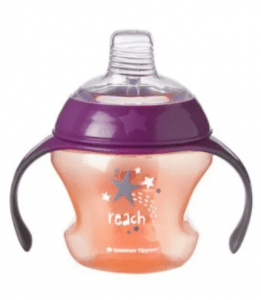
First Sips Soft Nipple Transition Cups (4 months+) (tommeetippee.com)
If your little one drank from a tommee tippee bottle, they’d likely adjust to this easily. The remove spout options are great. It’s not leak-proof so keep that in mind. The handles are removable, and all parts are dishwasher-safe.
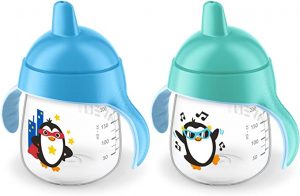
Philips Avent My Easy Sippy Cup 9oz, Blue/Teal, 2pk, SCF553/25 : Amazon.ca: Baby
This training cup is third in the list of stages for Phillips Avent, but in our experience, we could skip the first two stages, and this sippy still worked great for us after a bottle. But if that doesn’t work for you, check out the Penguin Sippy as a starter.
Another part of new sippy cups is, of course- labeling them! Here are the best labels for your sippy cups:
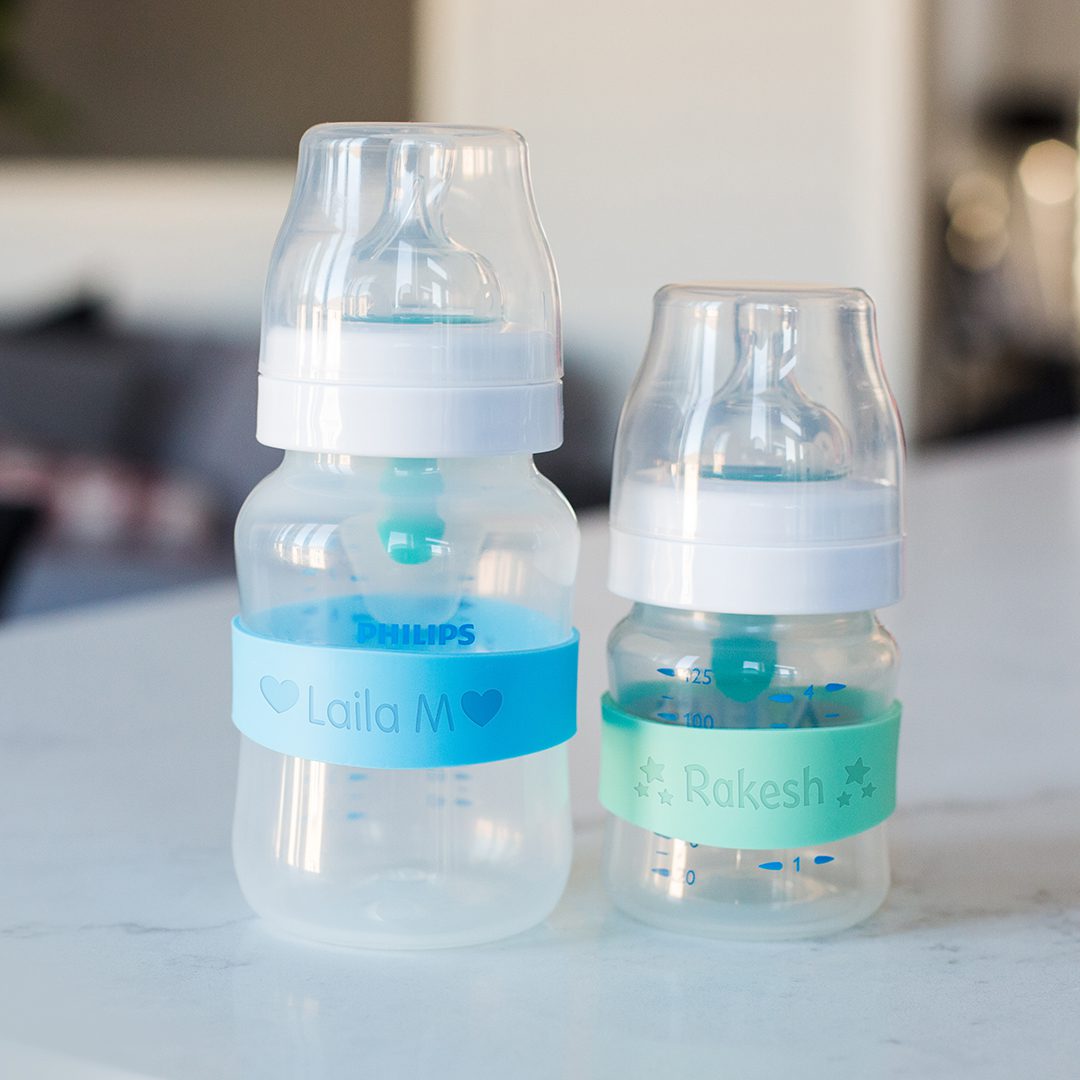
Baby Bottle Bands – Mabel’s Labels (mabelslabels.ca)
We love the bottle bands because they can squeeze themselves over bottles and provide an excellent grip for little hands, even when wet. Your little one’s name is custom engraved, and they can go in the dishwasher time and time again.
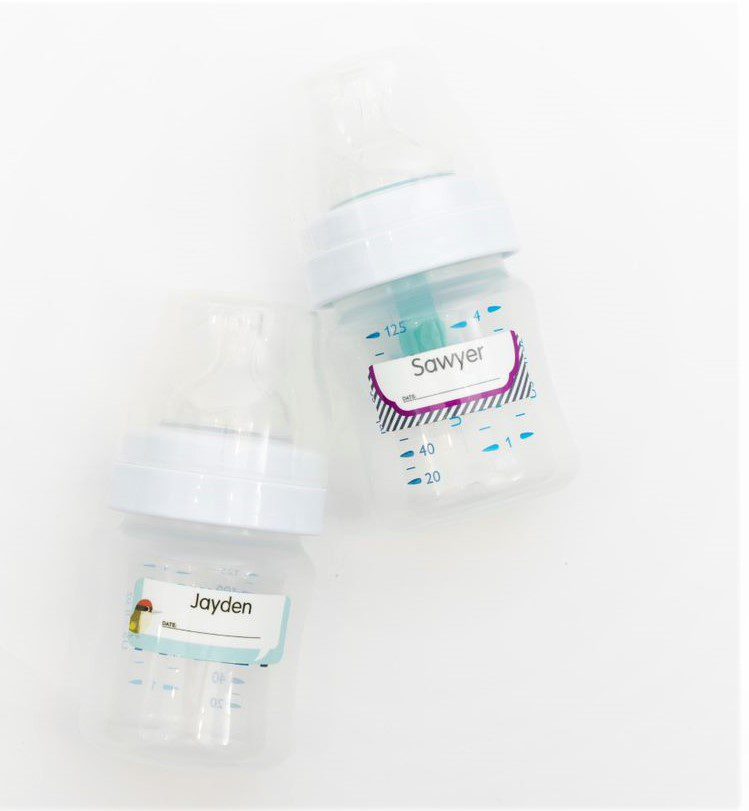
Baby Bottle Labels – Mabel’s Labels (mabelslabels.ca)
Depending on what’s in your sippy cup, you may need these labels if you want to have them labeled with a custom label and the ability to add a date and wipe on and off as needed.
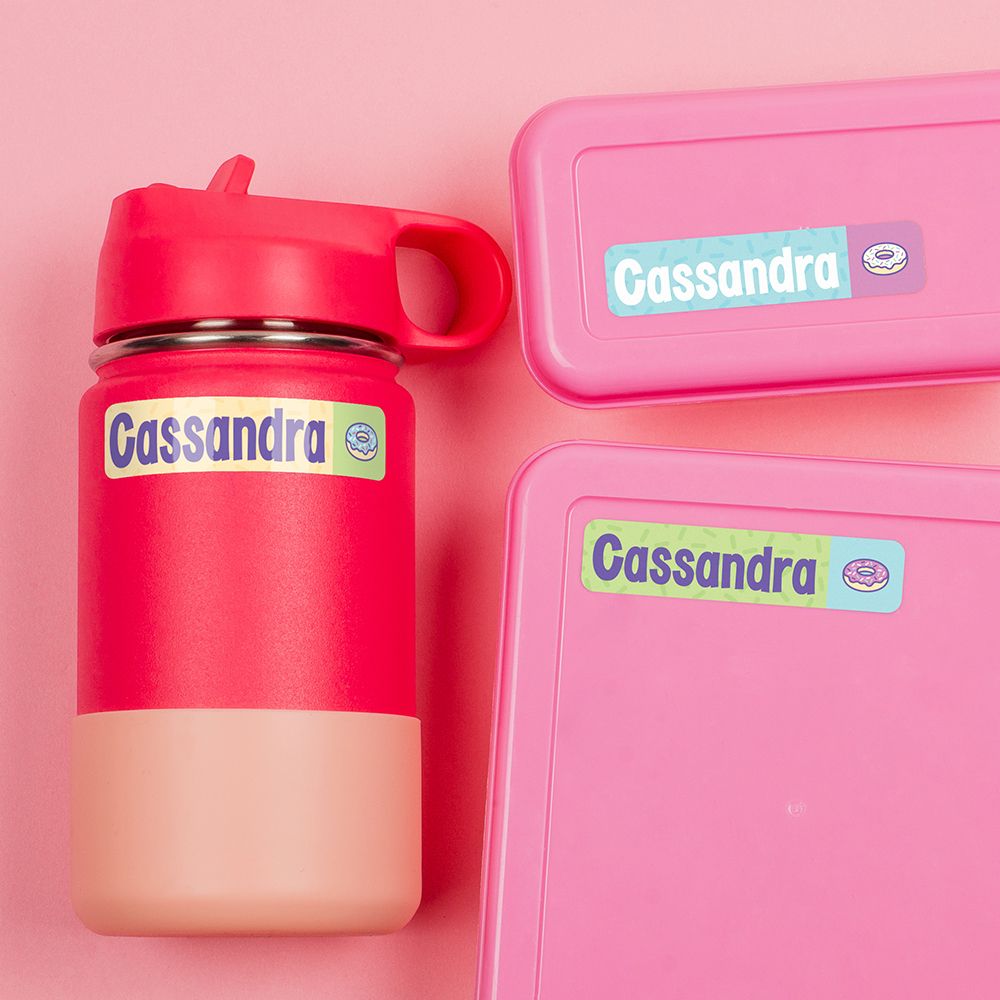
Large Rectangle Labels – Mabel’s Labels (mabelslabels.ca)
Perfect for labeling sippy cups, they’re easy to see, waterproof, dishwasher safe and come in many adorable designs.
Whichever cup works for you is obviously the best, so don’t stress over the details and just find what works for your little one. Here is a similar list of baby bottles. And if you’re looking for tips on transiting to daycare. Good luck, mama!

